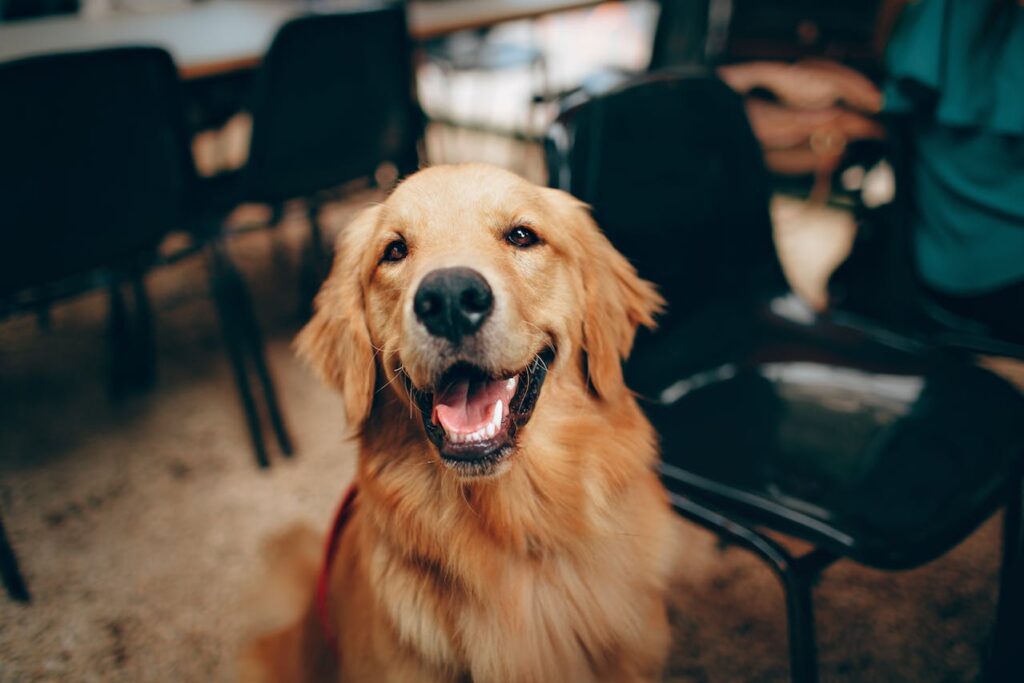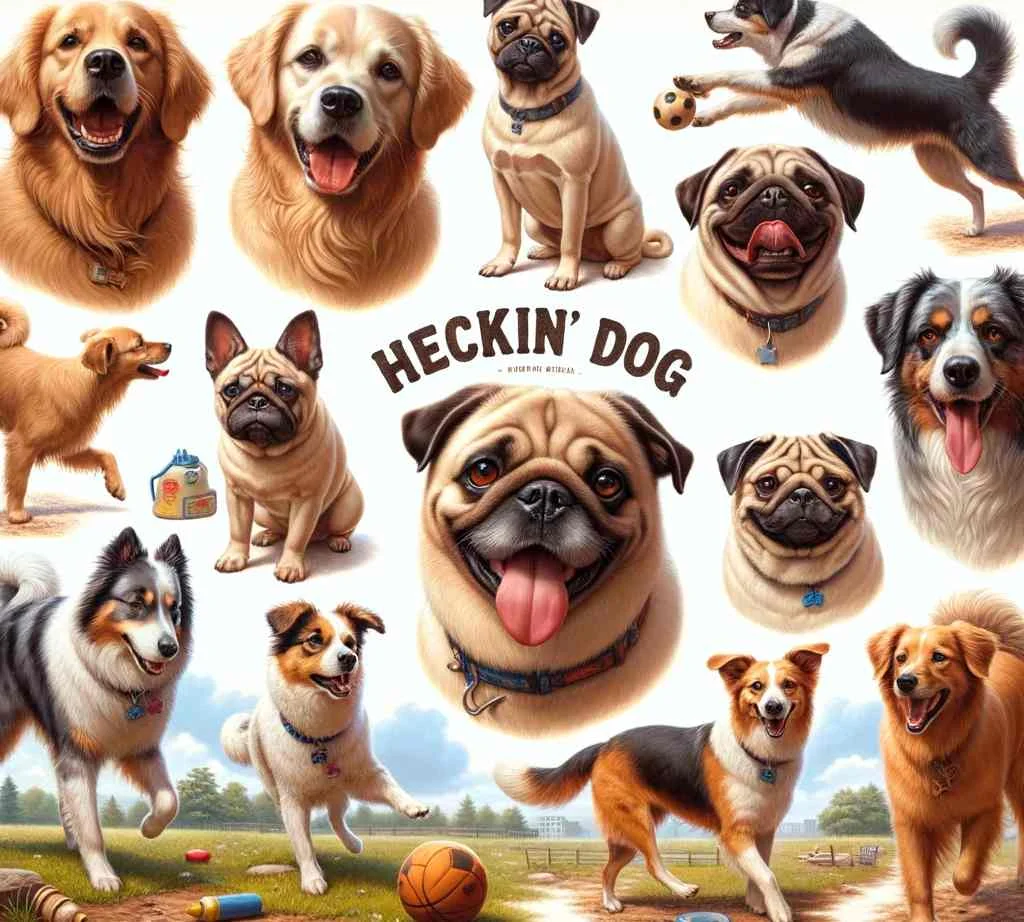Last updated on January 4th, 2024 at 08:21 am
Have you ever heard of the term “What the heckin’ dog” but don’t understand what it means? Don’t worry; this term is just an internet phrase used for dogs.
The phrase does not have an exact meaning because everyone is using it for different expressions. However, one thing is clear: it has gained global recognition. Its versatility makes people adapt it to their unique circumstances, which makes it an adaptable phrase in everyday conversations.
In this blog, we will explain the origin of “What The Heckin Dog” and how you can use it in your conversation and its popularity.
Table of Contents
What Is The Origin Of “What The Heckin Dog”?

“What the heckin’ dog“ is part of DoggoLingo, an internet language trend all about dogs. This playful and fun way of talking about our furry friends became popular on social media, especially Reddit and Twitter.
People from around the world joined in, using intentionally misspelled words and quirky phrases to describe their love for dogs. The term “DoggoLingo” itself combines “doggo,” a common word in this trend, with “lingo,” showing the unique vocabulary dog lovers created. While it’s not clear exactly where it started, the trend emerged from a shared love for dogs and a desire to bring humor to dog-related content. According to some sources, it might have started in 2015.
“What The Heckin Dog” Memes Trends

“What The Heckin Dog” Memes are funny pictures of dogs with captions that use words like “heckin,” “pupper,” “doggo,” “bork,” and “bamboozle.” These words are meant to sound like how dogs would talk if they could speak English.
The memes often show dogs doing cute or silly things, such as wearing costumes, playing with toys, or making funny faces. The memes are popular on social media platforms like
Reddit, Instagram, and Twitter, where people share them to make others laugh or smile.
How Can You Use “What The Heckin Dog” In Conversation?
You can use “What the heckin’ dog” in a casual and playful conversation, especially when expressing surprise or amusement related to a dog’s behavior or a funny situation involving dogs.
Imagine your friend excitedly sharing, “My dog learned how to fetch on its own!” Responding with happiness, you exclaim, “What the heckin’ dog! That’s amazing!”
This quirky phrase adds a playful vibe to the conversation with the essence of DoggoLingo. It’s a charming way to celebrate the delightful antics of our four-legged friends, turning ordinary dog tales into moments of shared laughter.
Why People Love Using “What The Heckin Dog”?
People appreciate using “What the heckin’ dog” because it captures the joy and surprise that dogs bring into our lives. Dogs have an incredible way of making us smile, and this playful phrase perfectly expresses the delight we feel when our furry friends do something cute or unexpected.
The positive effect of dogs on our lives is immense – their unconditional love, loyalty, and playful antics can lift our spirits and provide companionship. From a goofy expression to a wagging tail or a clever trick, our canine companions have a unique ability to bring happiness and warmth to our hearts, making them cherished members of our families.
What Are Some Heckin Dog Words?
If you are new to the “What the heckin’ dog” trend and want to learn, here are some terms that have become favorites among dog lovers:
Zoomies: Describing the playful burst of energy when a dog runs frantically.
Fren: Short for “friend,” acknowledging the special bond between humans and their dogs.
Paw-sitive: A play on “positive,” describing things in a dog’s life that bring joy.
Blop: Playful slang for a dog or cat sticking out its tongue unintentionally.
Doggo: A cute way to say “dog,” radiating affection. For example, “Look at that fluffy doggo!”
Pupper: The diminutive form of “puppy,” expressing the adorable qualities of dogs.
Bork: An onomatopoeic term representing a dog’s enthusiastic barking.
Floof: Celebrating dogs with exceptionally fluffy fur.
Popularity of “What The Heckin Dog”
The phrase “What The Heckin Dog” has gained popularity in online dog-loving communities. But it has also spread in every field because who doesn’t love dogs? Here are some of the examples of its popularity:
“Heckin Good Doggos” Game
The popularity of the term has extended to the gaming world with the introduction of the “Heckin Good Doggos” game. This game, inspired by DoggoLingo, revolves around delightful dog characters, bringing the playful language trend into entertainment. A famous YouTuber also makes videos while playing it and uploads them episode-wise.
Clothing Brands Using This Trend
Clothing brands have caught onto the “What The Heckin Dog” trend, including it in their designs. T-shirts, hoodies, and accessories featuring this lighthearted phrase have become popular among dog enthusiasts who want to express their love for their furry friends in a fun and fashionable way.
Innovative Marketing Strategy
The success of “What The Heckin Dog” highlights the effectiveness of an innovative marketing strategy. Brands benefit from the popularity of internet language trends to connect with a specific audience. They create products and experiences that relate to the online dog-loving community. Dog food brands are using slogans and adding headlines by using such phrases, for example: “Transform Your Doggo into a Fluff Master: Try Our Pet Shampoo for ‘What The Heckin Dog’ Experience!”
How Do Heckin Dogs Actually Communicate With Us?
We have made many unique words and phrases to talk about our pets, but how can they communicate with us? Understanding your dog’s communication is like deciphering a secret language they speak without words. It’s about knowing their emotions, whether it’s happiness, fear, or a desire to play, just by observing their tail, ears, and eyes. It is important for effective communication and ensuring your safety.
Tail, Ears And Mouth:
The speed and position of the tail matter. Ears forward and up convey alertness or curiosity, while flattened ears may suggest fear or submission. Soft, relaxed eyes reflect comfort, while a direct stare can be a sign of aggression or challenge. An open, relaxed mouth is friendly, but bared teeth can indicate aggression.
Paw And Hairs:
A relaxed body signifies calmness, while a stiff body may indicate tension or readiness to play. Raised hair on the back signals fear or arousal. Raising one paw can express uncertainty or playfulness.
Excessive Yawn:
Dogs may yawn when they’re stressed. Whining may indicate a desire for attention while growling can be a sign of fear or aggression. Often, a tail between the legs is a sign of fear or submission. Understanding these cues helps build a stronger bond with your furry friend and ensures positive interactions.







